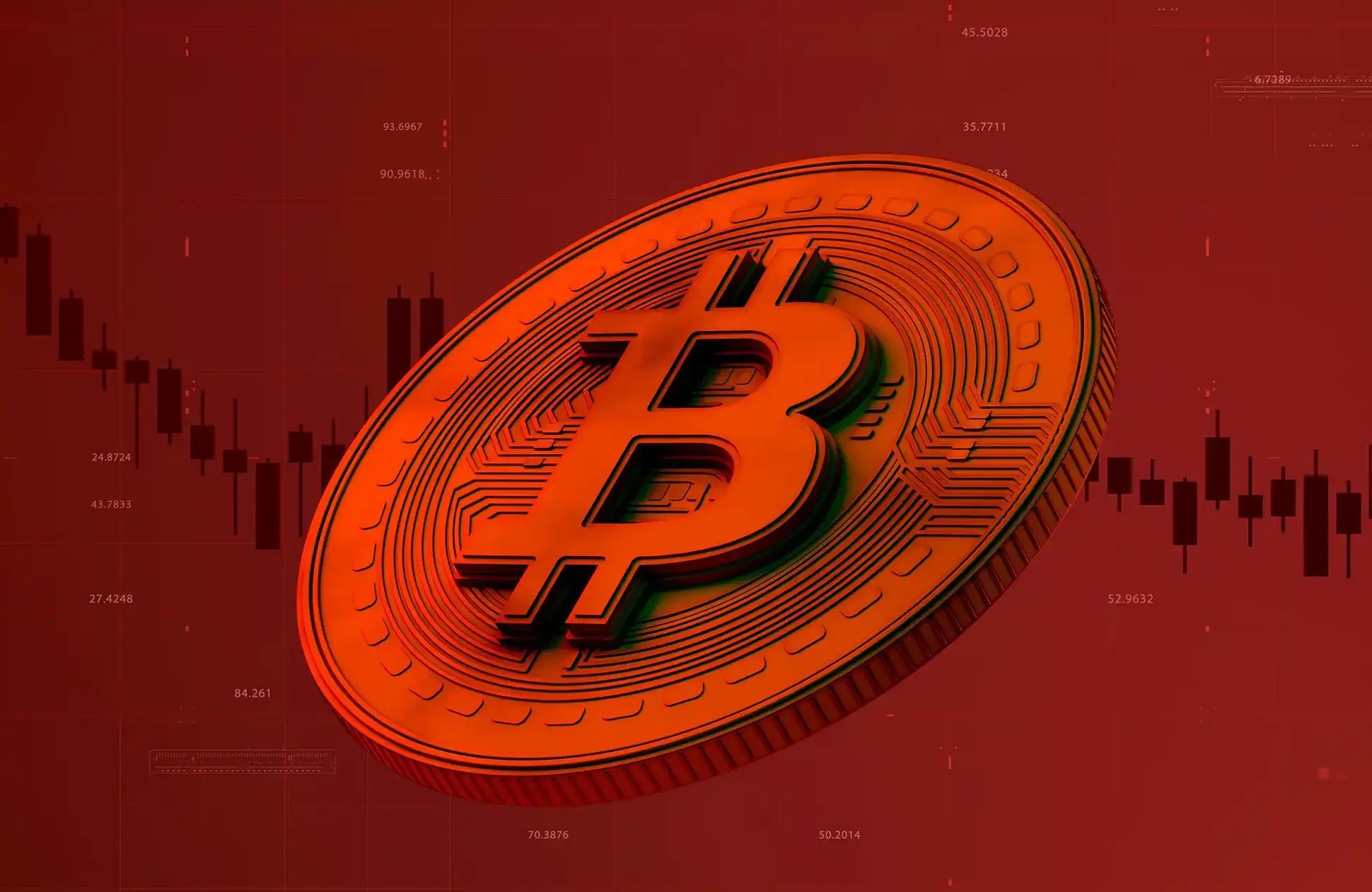Is This the True Reason Behind the $20 Billion Crypto Market Liquidation?
October 11, 2025, was a nightmare for crypto investors worldwide.
Bitcoin's price plummeted from a high of $117,000, dropping below $110,000 within a few hours. Ethereum saw an even more brutal drop, reaching 16%. Panic spread through the market like a virus, causing numerous altcoins to flash crash 80-90%, with a subsequent slight rebound but still generally down 20% to 30%.
In just a few hours, the global crypto market's capitalization evaporated by billions of dollars.
On social media, wails echoed, languages from around the world converging into the same lament. But beneath the surface of panic, the real transmission chain was far more complex than it seemed.
The starting point of this collapse was a sentence from Trump.
On October 10, U.S. President Trump announced via his social media that starting from November 1, he planned to impose a 100% additional tariff on all imports from China. The wording of this news was exceptionally strong; he wrote that U.S.-China relations had deteriorated to the point of "no need for a meeting," and the U.S. would retaliate through financial and trade means, using China's rare earth monopoly as a justification for this new tariff war.
After the news was released, the global market went into instant turmoil. The Nasdaq plummeted by 3.56%, marking one of the rarest single-day declines in recent years. The U.S. Dollar Index dropped by 0.57%, crude oil tumbled by 4%, and copper prices fell simultaneously. Global capital markets sank into panic selling.
In this epic reckoning, the red-hot stablecoin USDe became one of the biggest victims. Its de-pegging, along with the high-leverage cycle lending system built around it, collapsed one after another within hours.
This localized liquidity crisis quickly spread, with many investors using USDe for cycle lending being liquidated, and USDe's price began to de-anchor on various platforms.
More troublingly, many market makers also used USDe as collateral for contracts. When USDe's value nearly halved in a short period, their leverage positions doubled passively. Even seemingly safe one-time leverage long positions could not escape the fate of liquidation. The combined effect of small coin contract and USDe price became a double blow, causing market makers to suffer heavy losses.
How did the Domino Effect of "Cycle Lending" Collapse?
The Temptation of 50% APY Returns
USDe, introduced by Ethena Labs, is a "synthetic dollar" stablecoin. With a market cap of around $14 billion, it has risen to become the world's third-largest stablecoin. Unlike USDT or USDC, USDe does not have an equal amount of USD reserves but relies on a strategy called "Delta Neutral Hedging" to maintain price stability. It holds Ethereum spot, while simultaneously shorting an equivalent value of Ethereum perpetual contracts on derivative exchanges to hedge against fluctuations.
So, what attracted funds to flock in? The answer is simple: high returns.
Staking USDe itself can earn approximately a 12% to 15% annualized return, stemming from perpetual contract funding rates. Furthermore, Ethena collaborates with multiple lending protocols to offer additional rewards for USDe deposits.
What truly skyrocketed the yield was "yield farming." Investors engaged in a series of operations within lending protocols, collateralizing USDe, borrowing other stablecoins, exchanging them back into USDe, and redepositing. After a few rounds of operations, the principal was amplified to nearly four times its original amount, pushing the annualized yield to the 40% to 50% range.
In the traditional financial world, a 10% annualized return is considered rare. However, the 50% yield provided by USDe yield farming is almost irresistible to profit-seeking capital. Consequently, funds kept pouring in, and the USDe deposit pool of lending protocols often remained "fully utilized." When new capacity was released, it would be snatched up instantly.
USDe's Decoupling
Trump's tariff remarks sparked global market panic, putting the crypto market into "safe-haven mode." Ethereum plummeted by 16% in a short period, directly impacting the balance that USDe relied on. Nevertheless, the actual trigger for USDe's decoupling was the liquidation of a large institution on the Binance platform.
Crypto investor and Primitive Ventures co-founder Dovey speculated that the real tipping point was a large institution on the Binance platform, potentially a traditional trading firm utilizing cross-margin, being liquidated. This institution used USDe as cross-margin, and when the market experienced intense volatility, the liquidation system automatically sold off USDe to repay the debt, causing its price to briefly plummet to $0.6 on Binance.
USDe's stability originally relied on two key conditions. First was a positive funding rate, where in a bull market, shorts had to pay longs, allowing the protocol to profit. Second was ample market liquidity, ensuring users could exchange USDe for nearly $1 at any time.
However, on October 11, both these conditions collapsed simultaneously. Market panic led to a surge in shorting sentiment, swiftly flipping perpetual contract funding rates to negative values. The protocol's substantial short positions, once the "fee recipients," turned into the "fee payers," needing to continuously pay fees, directly eroding collateral value.
Once USDe began to decouple, market confidence rapidly dissolved. More people joined the selling frenzy, the price continued to plummet, and a vicious cycle emerged.
Liquidation Spiral of Recurring Debt
In a lending protocol, when a user's collateral value falls to a certain level, the smart contract automatically triggers liquidation, forcing the sale of the user's collateral to repay their debt. When the price of USDe drops, the health of positions that have added leverage through recurring debt quickly falls below the liquidation line.
Thus begins the liquidation spiral.
The smart contract automatically sells the USDe of the liquidated users on the market to repay the debt they borrowed. This further intensifies the selling pressure on USDe, causing its price to drop even more. The price drop then triggers more liquidations of recurring debt positions. This is a typical "death spiral."
Many investors may not realize until the moment of liquidation that their so-called "stablecoin yield farming" is actually a high-leverage gamble. They thought they were just earning interest, unaware that the operation of recurring debt had magnified their risk exposure several times. When the price of USDe experiences intense volatility, even those investors who consider themselves conservative can hardly escape liquidation.
Liquidation of Market Makers and Market Collapse
Market makers are the "lubricant" of the market, responsible for placing orders, matching trades, and providing liquidity for various crypto assets. Many market makers also use USDe as collateral on exchanges. When the value of USDe plunges drastically in a short period, the collateral value of these market makers also shrinks significantly, leading to the forced liquidation of their positions on exchanges.
According to statistics, this cryptocurrency market crash resulted in liquidations of billions of dollars. It is worth noting that the majority of this multi-billion-dollar figure does not solely come from retail investors' one-way speculative positions but also includes a large amount of institutional market makers and arbitrageurs' hedging positions. In the case of USDe, these professional institutions originally used sophisticated hedging strategies to mitigate risks, but when USDe, the asset considered "stable" as collateral, suddenly plummeted, all risk management models failed.
On derivative trading platforms like Hyperliquid, a large number of users were liquidated, and the platform's HLP (Liquidity Provider Treasury) holders saw a sudden 40% increase in profits overnight, with profits soaring from $80 million to $120 million. This figure indirectly demonstrates the enormity of the liquidation scale.
When market makers collectively face liquidation, the consequences are catastrophic. Market liquidity is instantly drained, and the bid-ask spread widens sharply. For smaller-cap coins with already limited liquidity, this means that, on top of a general price decline, they will experience an accelerated collapse due to liquidity shortages. The entire market plunges into panic selling, turning a crisis triggered by a single stablecoin into a systemic collapse of the entire market ecosystem.
Echoes of History: The Shadow of Luna
This scene made investors who had experienced the 2022 bear market feel déjà vu. In May of that year, a cryptocurrency empire named Luna collapsed in just seven days.
At the core of the Luna event was an algorithmic stablecoin called UST. It promised up to a 20% annualized return, attracting billions of dollars in funds. However, its stability mechanism relied entirely on market confidence in another token, LUNA. When UST deviated from its peg due to massive sell-offs, confidence crumbled, the arbitrage mechanism failed, and it ultimately led to infinite token issuance for LUNA, plummeting the price from $119 to less than $0.0001, wiping out a market value of around $600 billion.
By juxtaposing the events of USDe and Luna, we can uncover striking similarities. Both used well above-average yield as bait, attracting a significant amount of funds seeking stable returns. Both exposed the vulnerability of their mechanisms in extreme market conditions, eventually falling into a death spiral of "price drop, confidence collapse, liquidation sell-off, further price drop."
They both evolved from a crisis of a single asset into systemic risks affecting the entire market.
Of course, there are also some differences. Luna was a purely algorithmic stablecoin with no external asset backing, while USDe had crypto assets such as Ethereum as over-collateralization. This allowed USDe to have stronger resilience in a crisis compared to Luna, which is why it did not go to zero like Luna.
Furthermore, after the Luna event, global regulatory bodies have already raised red flags against algorithmic stablecoins, causing USDe to live in a more heavily regulated environment since its inception.
However, the lessons of history seem to have been forgotten by some. After the collapse of Luna, many vowed to "never touch algorithmic stablecoins again." Yet, just three years later, faced with USDe's staggering 50% annualized yield in yield farming, people once again forgot about the risks.
What is more alarming is that this event not only exposed the vulnerability of algorithmic stablecoins but also revealed the systemic risks of institutional investors and exchanges. From Luna's explosion to FTX's collapse, from cascading liquidations on small and medium exchanges to the crisis in the SOL ecosystem, this path was already traveled in 2022. Yet, three years later, large institutions using cross-margining are still using high-risk assets like USDe as collateral, ultimately triggering a chain reaction in market volatility.
Philosopher George Santayana once said, "Those who cannot remember the past are condemned to repeat it."
Market Respect
The financial market has an immutable rule: risk and reward will always be proportional.
The reason why USDT or USDC can only offer a low annualized return is because they are backed by real US dollar reserves, with very low risk. USDe can offer a 12% yield because it takes on the potential risk of Delta neutral hedging strategy in extreme situations. The reason why USDe's leveraged lending can provide a 50% return is because it adds a fourfold leverage risk on top of the base return.
When someone promises you "low risk, high return," they are either a fraud or you have not yet understood where the risk lies. The danger of leveraged lending lies in the hidden nature of its leverage. Many investors fail to realize that their repeated collateralized lending operations are actually a highly leveraged speculative behavior. Leverage is a double-edged sword; it can amplify your gains in a bull market but will also magnify your losses in a bear market.
The history of the financial market has repeatedly proven that extreme situations will always occur. Whether it's the global financial crisis of 2008, the market crash in March 2020, or the Luna collapse in 2022, these so-called "black swan" events always come when least expected. The fatal flaw of algorithmic stablecoins and high leverage strategies is that their design intent is to gamble on the non-occurrence of extreme situations. This is a bet that is doomed to lose.
Why do so many people still forge ahead knowing the risks? Human greed, luck, and herd mentality may explain part of it. In a bull market, continuous success can numb a person's risk awareness. When everyone around you is making money, few can resist the temptation. But the market will always, at some point, remind you in the cruelest way possible: there is no such thing as a free lunch.
For the average investor, how can one survive in this turbulent ocean?
Firstly, one must learn to identify risk. When a project promises over 10% "stable" returns, when its mechanism is so complex that you cannot explain it to a layman in a single sentence, when its primary purpose is to earn yield rather than actual utility, when it lacks transparent, verifiable fiat reserves, and when it is being excessively promoted on social media, your alarm bells should ring.
The principles of risk management are simple yet timeless. Do not put all your eggs in one basket. Avoid using leverage, especially hidden high-leverage strategies like leveraged lending. Do not delude yourself into thinking you can escape before a collapse; during the Luna collapse, 99% of people were not spared.
The market is much smarter than any individual. Extreme situations are bound to occur. When everyone is chasing high returns, it is often the riskiest moment. Remember Luna's lesson, where a $600 billion market cap went to zero in seven days, and the savings of hundreds of thousands disappeared. Remember the panic on October 11th, where $2.8 trillion evaporated in hours, leading to countless liquidations. Next time, such a story could happen to you.
Buffett said, "It's only when the tide goes out that you learn who's been swimming naked."
In a bull market, everyone seems like an investment genius, with 50% returns seemingly within easy reach. But when extreme situations arise, you find yourself standing at the edge of a cliff. Algorithmic stablecoins and high-leverage strategies have never been about "stablecoin finance" but rather high-risk speculative tools. A 50% return is not a "free lunch" but bait at the edge of the cliff.
In the financial market, surviving is always more important than making money.
Welcome to join the official BlockBeats community:
Telegram Subscription Group: https://t.me/theblockbeats
Telegram Discussion Group: https://t.me/BlockBeats_App
Official Twitter Account: https://twitter.com/BlockBeatsAsia


 Forum
Forum Finance
Finance
 Specials
Specials
 On-chain Eco
On-chain Eco
 Entry
Entry
 Podcasts
Podcasts
 Activities
Activities
 OPRR
OPRR









